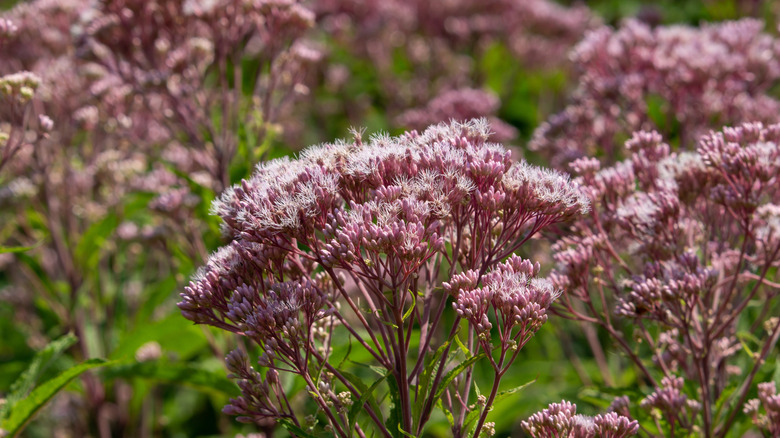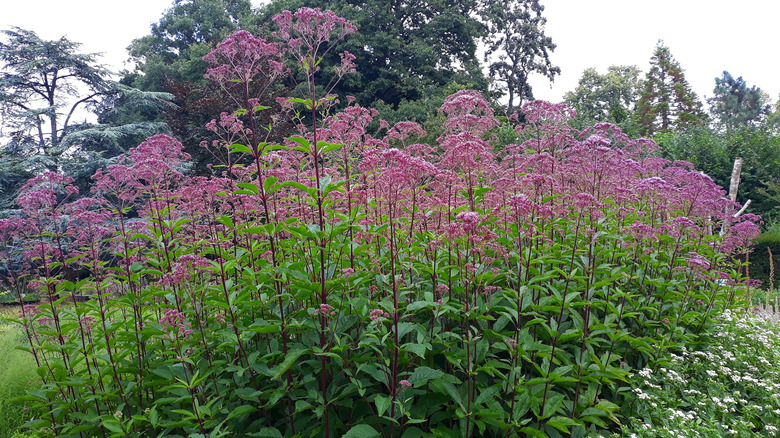Top Reasons To Consider Planting Sweet Joe Pye Weed In Your Garden
Building a pollinator's paradise in your yard and garden has many benefits. Not only is a wondrous garden's beauty attractive to birds, bees, and butterflies — depending on what you add — but it also provides an enjoyable outdoor space for you as well. One of the most lovely perennials you could add to such a garden is a swamp milkweed look-alike — sweet Joe-Pye weed (Eutrochium purpureum). This plant blooms with mauve, fragrant flowers from mid-summer to early fall, attracting bees, butterflies, and songbirds. And while that might be one of the main reasons many people add sweet Joe-Pye weed to their gardens, it has other appealing qualities as well. If you live in zones 4 through 9, this addition is a vibrant, deer-resistant plant that isn't susceptible to any noteworthy pests or diseases, and is a low-maintenance way to create an attractive lawn. Plus, the species is easy to propagate.
While deer are essential to a balanced ecosystem, these herbivores primarily feed on leaves and plants, and you don't want them chomping on your landscaping. Joe-Pye weed can help create a deer-resistant garden that will repel our four-legged friends without causing them harm. Deer shy away from plants that taste bitter, have prickly or coarse leaves, stems with thorns, are toxic, or have a strong smell. Joe-Pye weed emits a strong vanilla fragrance that you will find quite pleasant, but deer can't stand. It also has a tough texture, hitting two characteristics deer don't like. You can plant deer-resistant species like Joe-Pye weed along the garden's borders to keep wandering deer away.
Sweet Joe-Pye weed is easy to grow and propagate
Low maintenance is another excellent quality of sweet Joe-Pye weed. While caterpillars might munch on its leaves, they attract birds to your garden, so that isn't necessarily a bad thing. As far as pests go, none seem to affect this plant. This perennial prefers full sun but will tolerate partial shade. And although Joe-Pye weed prefers moist, fertile, and well-drained soil, it isn't picky about the soil's pH, so you can plant it in difficult spots around your yard. Care entails regular watering to keep the soil moist but not soggy, pruning and fertilizing in the spring, and deadheading faded flowers.
To propagate sweet Joe-Pye weed, there are three options: by seed, via division, and through stem cutting. Growing the plant from seed is the most difficult route. Try planting the seeds outside in the fall to give them about three months of cold stratification and moisture to germinate. Even then, the chances of growth are low. Instead, divide the perennial after it goes dormant in the fall or early spring by slicing it straight down between stems with a sharp shovel while still in the ground and replanting the cut portion. Or propagate from stems by cutting a 4 to 6-inch piece, dipping it into rooting hormone, and replanting.

